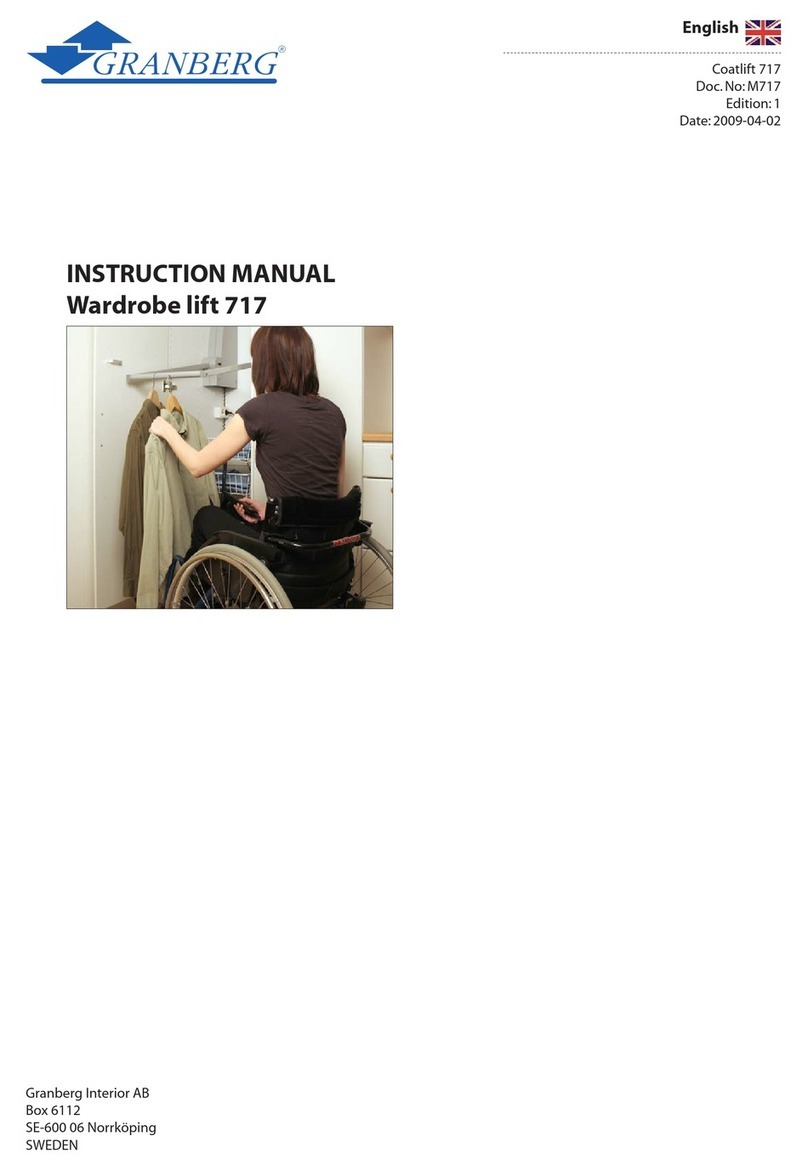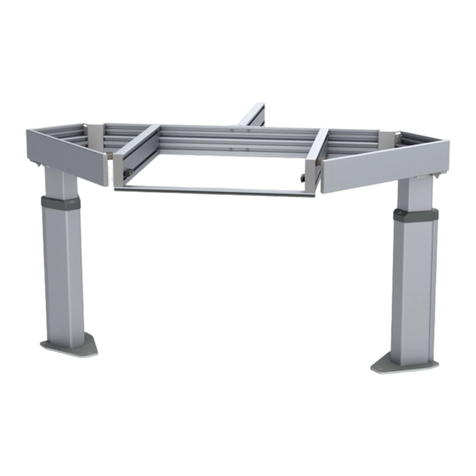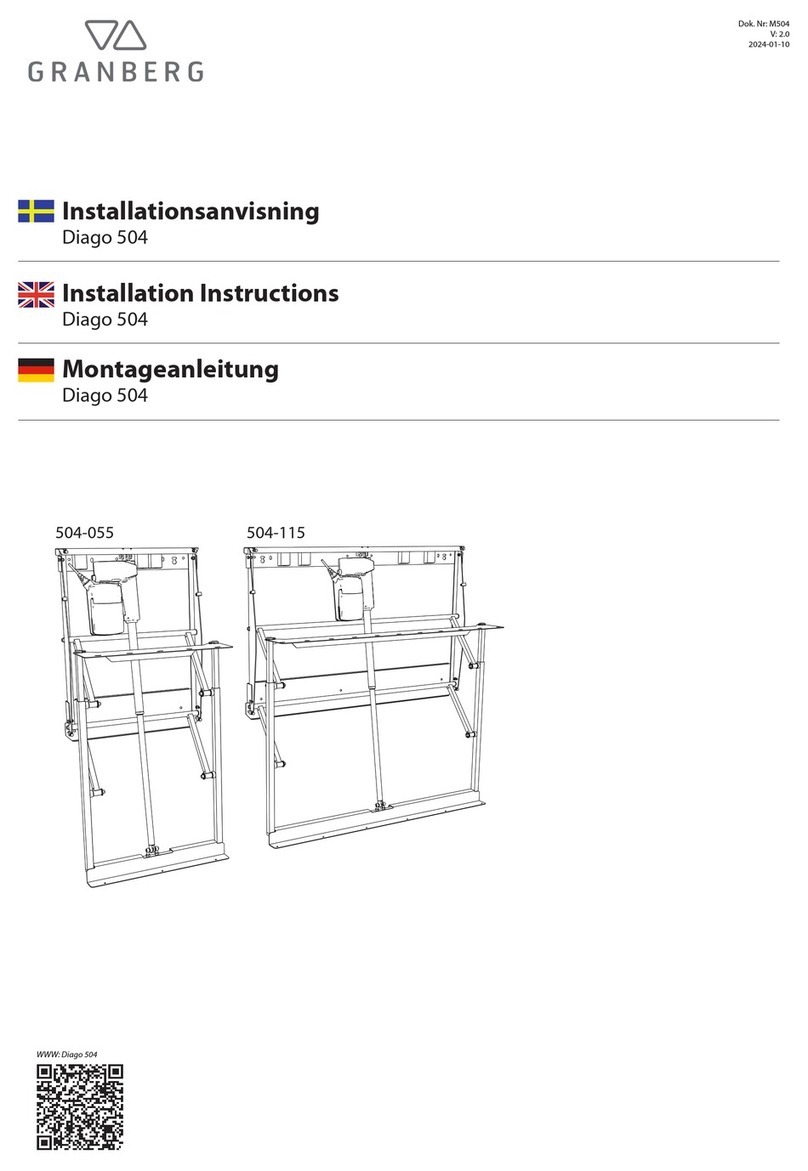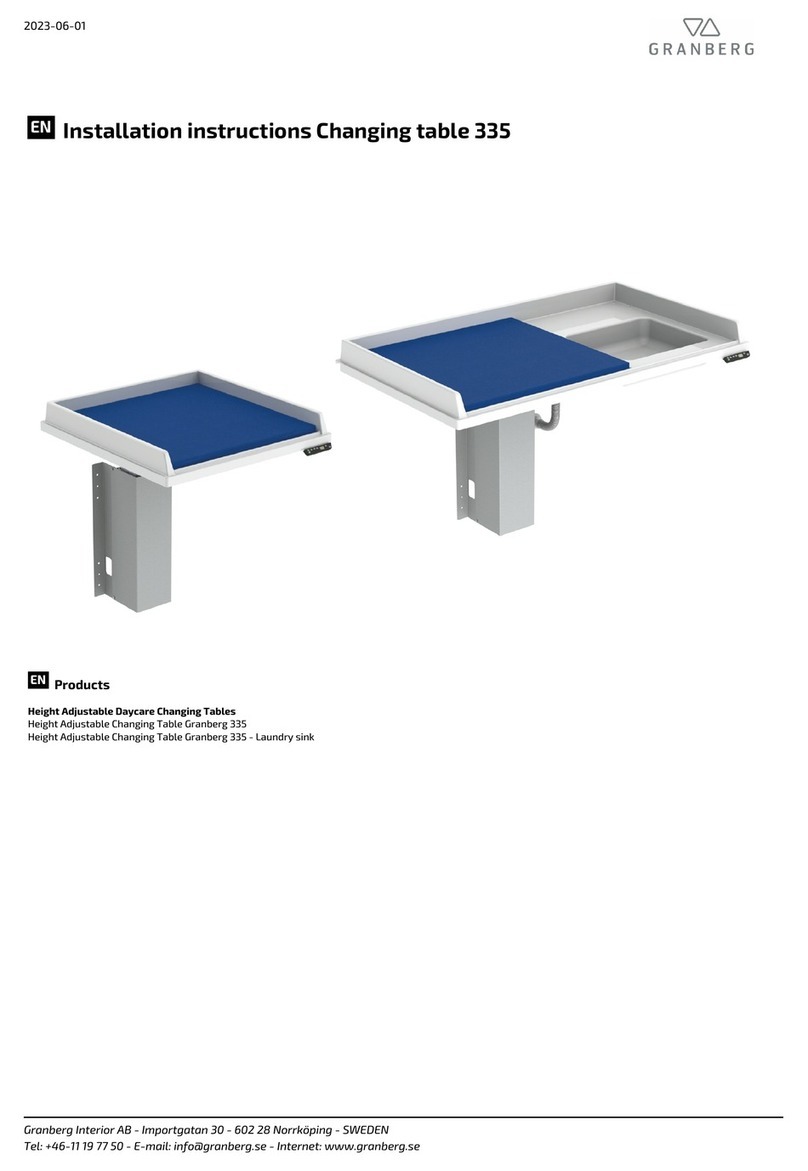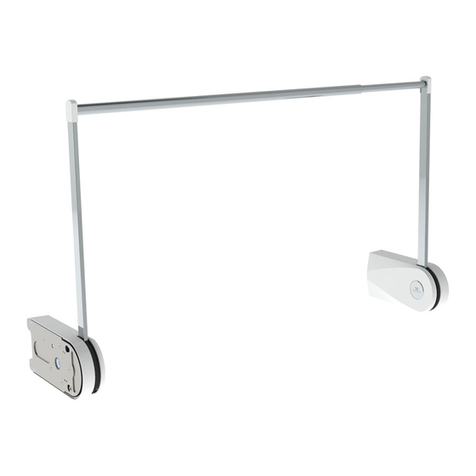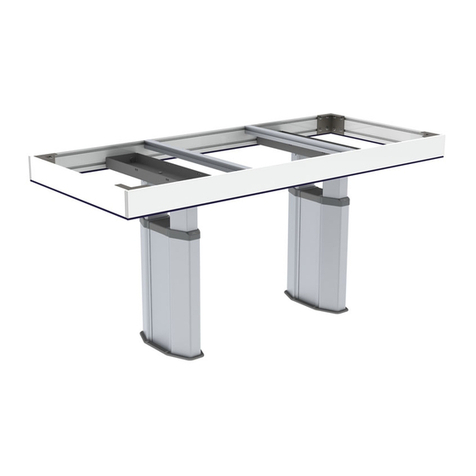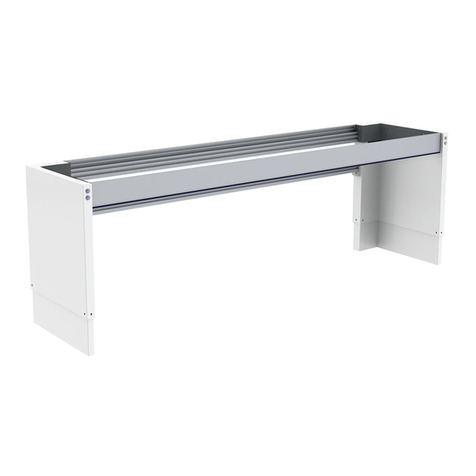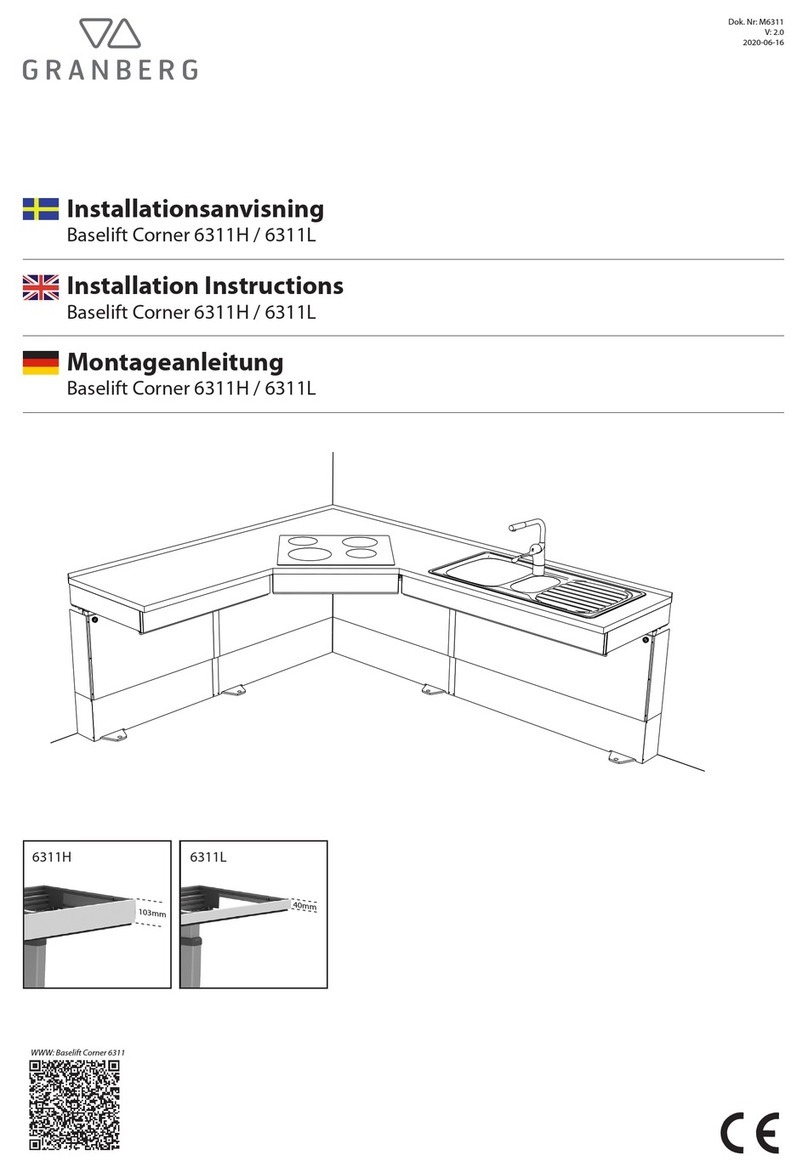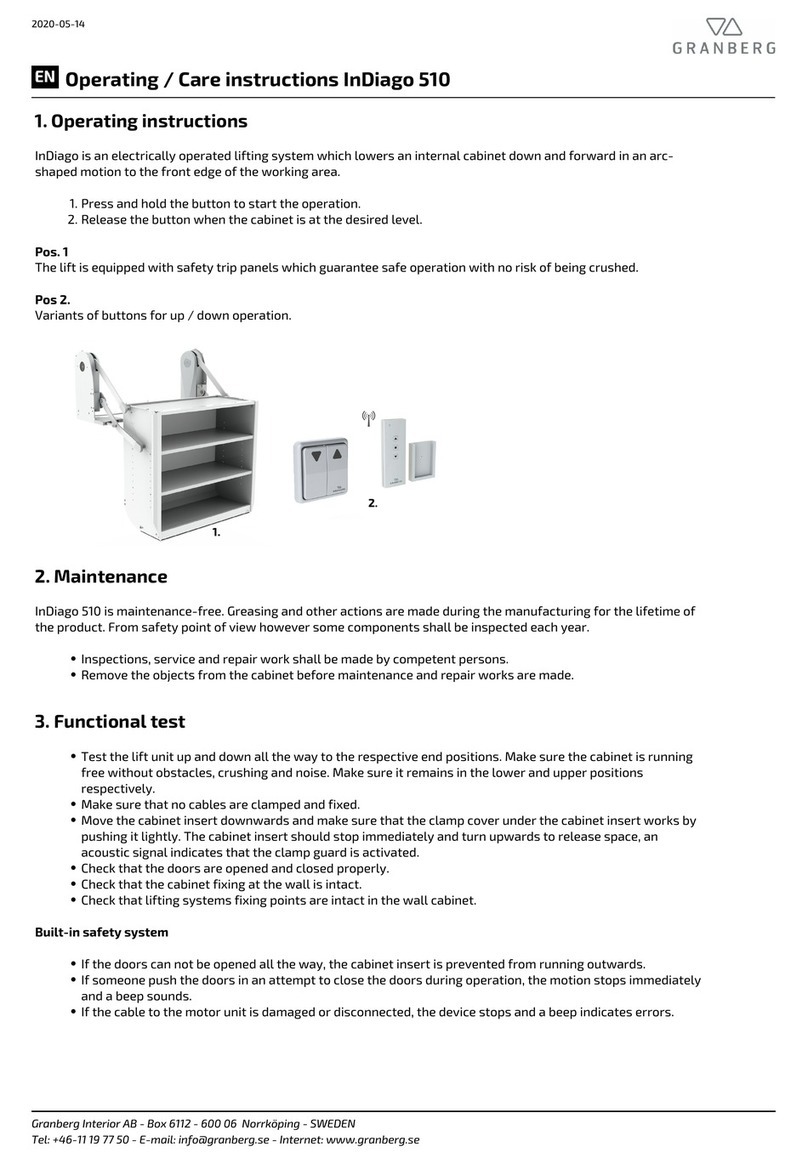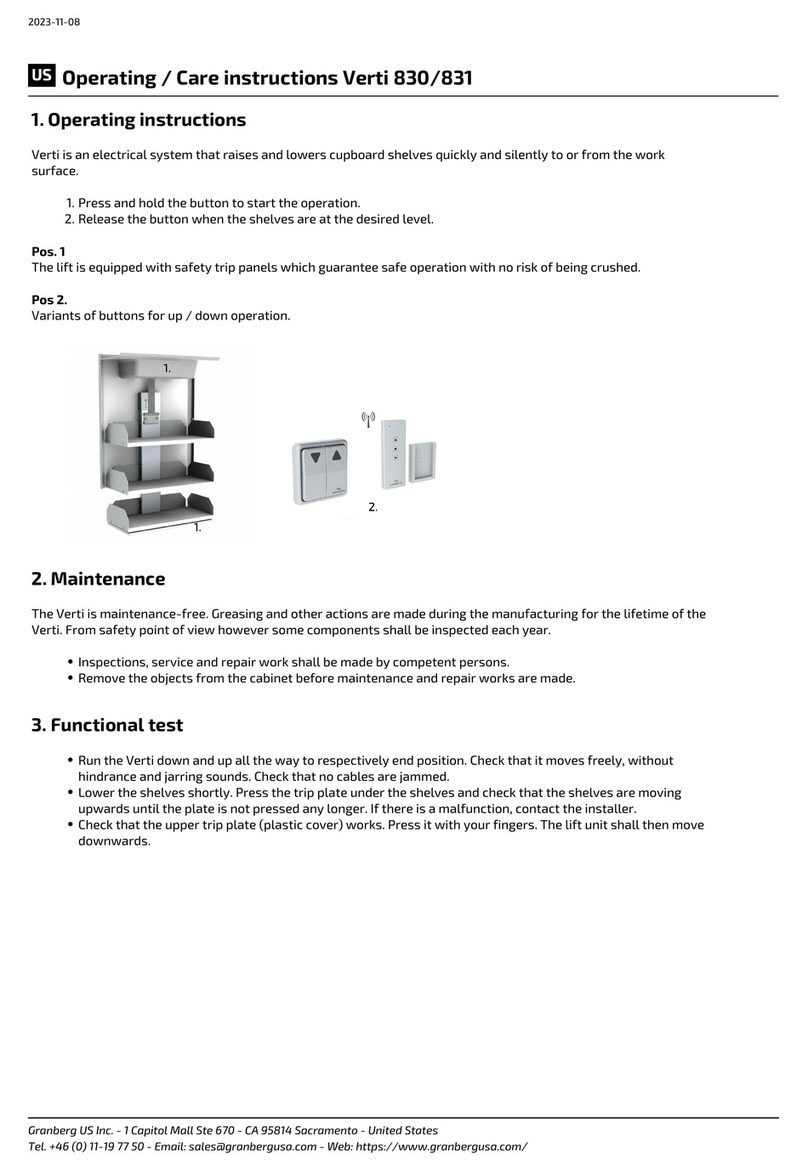
5. Safe use
The table is designed to avoid the risk of injury and accident. However, it is still most important that the user is
thoroughly familiar with the correct manner of installing and operating the table.
The table must only be used under the conditions described in "Intended use".
The table must be operated in a manner to avoid the risk of personal injury and material damage.
The table must only be operated by persons who have read and understand these instructions and who are
qualified to use it.
Remember that it is your responsibility as user to ensure that nobody suffers injury.
The table and the work area must be in good condition. The table must not be used in case of any damage or
fault which affects its operational reliability or safety or if it has been repaired, modified or adjusted without
the permission and approval of an authorised person.
Make sure the table is steady and horizontal.
The push-button unit must be located so that the operator has a clear view of the table the whole time it is
moving.
Press only the push-button for the desired direction of movement.
Do not lower the table unless the space below is free from persons and objects.
Only handle loads which are steadily and securely arranged.
Never allow the table to come in contact with adjacent objects.
Modifications of the table which impact on its operational reliability or safety are not permitted.
Plates and markings must not be removed or obliterated.
Do not overload the table.
The table must undergo annual inspection in the interests of accident prevention.
Do not operate the table in potentially explosive environments.
If the table is used in a public environment, particularly one where children may enter the operating area,
the operator shall take adequate steps to prevent persons entering the hazardous area, e.g. by cordoning off
said area.
The table surface must be clear during inspection, servicing and repair.
Installation, service and repairs may only be carried out by persons possessing the necessary skills.
Only original parts may be used as replacements, otherwise our warranty commitments may be null and
void.
6. Load distribution and side forces
Note that the maximum load refers to a load which is spread and distributed evenly over the table surface.
Point loads are not permitted.
Essential requirements for load distribution:
The load must be spread over the entire table surface.
Lateral forces are not permitted.
Lateral (sideways) forces can be caused e.g. by pressing against the table or the load.
It is very difficult to gauge the strength of laterally acting forces, therefore the greatest care must be exercised at all
times.
Safety measures may be required on or around the table. Discuss the appropriate measures with your supplier or
with a safety delegate, occupational health inspector or similar person.
We recommend drawing up a Risk Analysis for the work situation in accordance with the Machinery Directive.
If accessory equipment is installed by the user, Granberg must be contacted for approval of the load conditions.
Granberg Interior AB - Importgatan 30 - 60228 Norrköping - Sweden



